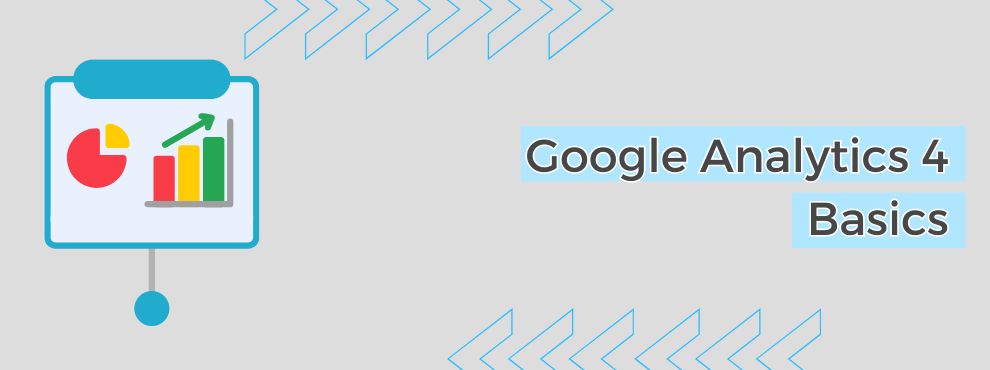Google Analytics 4 (GA4) is the latest version of Google’s popular web analytics tool, designed to provide a more comprehensive, user-centric view of online behavior.
Unlike its predecessor, Universal Analytics, GA4 offers a more holistic and event-centric approach, allowing businesses to gain deeper and more accurate insights.
Table of contents
Introduction to GA4
Google Analytics 4 is the evolution of Google Analytics, built to meet the evolving needs of digital businesses. Launched in October 2020, GA4 focuses on delivering a holistic view of the user journey across different platforms and devices, using an event-driven data model.
Key differences with Universal Analytics
- Focus on events: unlike Universal Analytics, which focuses on sessions and page views, GA4 uses events as the central unit of measurement. This allows for a more detailed analysis of user interactions.
- Multi-device measurement: it is designed to track user behavior across different devices and platforms, providing a unified view of the customer.
- Privacy and compliance: focuses on user privacy, providing enhanced options for compliance with regulations such as GDPR and CCPA.
Configuring GA4
At first, it can be tricky to get familiar with the Google Analytics 4 interface, but as soon as you read this, you’ll see that setting it up is effortless.
Creating a GA4 property
To get started with GA4, you need to create a new property in your Google Analytics account. Here are the basic steps:
- Log in to your Google Analytics account.
- In the Administration section, select“Create property“.
- Choose “Google Analytics 4” as the property type.
- Follow the instructions to set up the property, including data flow settings (web, iOS, Android).
Implementing the tracking code
Once the property is created, you need to implement the GA4 tracking code on your website or app. This can be done in several ways:
- Google Tag Manager: use Google Tag Manager to implement the tracking code without directly modifying the website code.
- Manual code: insert the tracking code provided by GA4 directly into the HTML of your website.
GA4 Key Concepts
In this new version of Analytics we have some concepts that may confuse you, with this information you can begin to better understand the features.
Events and parameters
In GA4, everything is measured as an event. Each user interaction is recorded as an event, allowing for more detailed and personalized analysis. Events can be specific actions such as clicks, downloads, page views, and more.
- Automatic events: Automatically records certain events such as clicks on outbound links and page views.
- Recommended events: Google recommends setting up additional events to capture important interactions that are not automatically recorded.
- Custom events: You can create custom events to measure specific and unique actions on your website or application.
User and session measurement
Although GA4 focuses on events, it is still important to understand user and session metrics:
- Users: GA4 offers two main user metrics, “Total Users” and “Active Users.” Active Users” are defined as those who have logged in within the last 30 minutes.
- Sessions: a session is defined as a group of user interactions within a specific period. GA4 measures sessions in a similar way to Universal Analytics, but with greater flexibility in event configuration and analysis.
Reporting and analysis
GA4 offers a variety of predefined reports and custom analytics options. Some of the key reports include:
- Real-time report: displays user interactions in real time, enabling immediate monitoring of traffic and behavior.
- Lifecyclereport: provides detailed information on user acquisition, engagement, monetization and retention.
- Exploratory analytics: advanced tools to create custom analytics, such as cohorts and conversion funnels.
Integrations and connections
GA4 easily integrates with other Google tools, such as Google Ads and Google BigQuery, allowing for more advanced analytics and greater data segmentation and analysis capabilities.
Advantages of GA4
Like any change, there are disadvantages but also new features that can make our lives much easier, this translates into a number of advantages that you will surely love.
Multiplatform analysis
GA4 is designed to track and analyze user behavior across multiple platforms, including websites and mobile apps. This provides a more complete and consistent view of the customer journey.
Improved focus on privacy
With a focus on user privacy, GA4 includes enhanced options for compliance with privacy regulations, enabling companies to better manage user data responsibly.
Actionable Insights
GA4’s ability to provide more detailed and accurate insights enables enterprises to make more informed and strategic decisions. Event personalization and advanced analytics make it easier to identify opportunities and areas for improvement.
Conclusion
Google Analytics 4 represents a significant shift in the way businesses can analyze and understand user behavior. With its focus on events, multi-device measurement, and enhanced privacy capabilities, GA4 offers a powerful tool for modern digital analytics.
Adopting and understanding the basics of GA4 will enable enterprises to take full advantage of its capabilities and stay competitive in an ever-evolving digital environment.
There are many more features that are convenient to review by experts, you can contact us by clicking here.




Deja un comentario